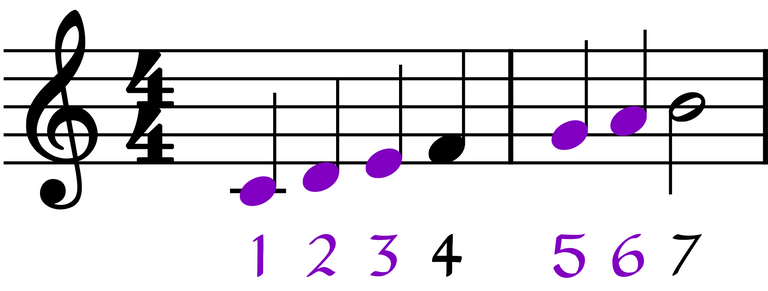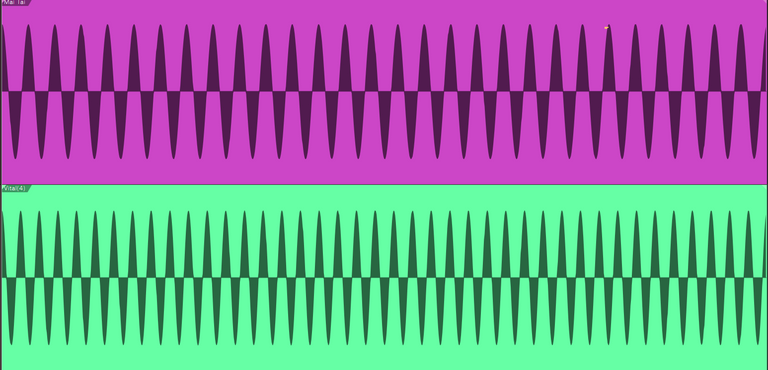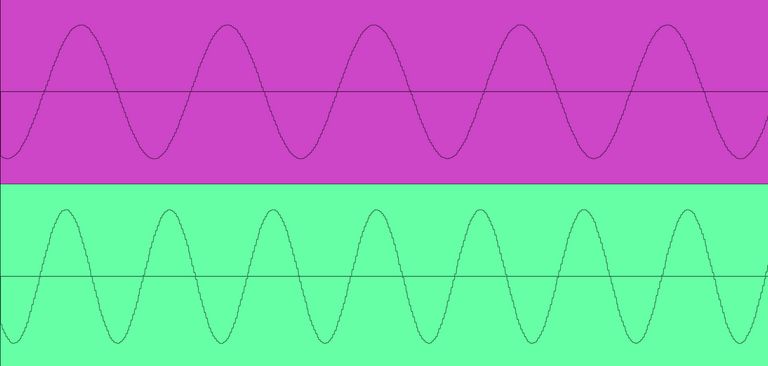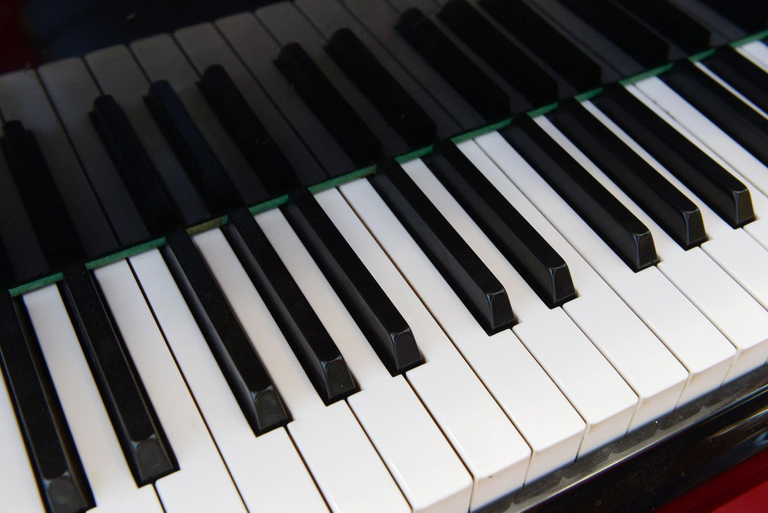Why is the Pentatonic Scale *Everywhere*?
There is a lost meme that suggests a guitarist begins with the pentatonic scale, grows into major, minor, diminished and modes, advances further to chromatic enclosures, drop 2 voicing and nested tuplets, and finally graduates to... the pentatonic scale.
I love this - there is so much truth to it. Of all the nifty little tricks and rules and virtuosic dick measuring, it all comes down to those five little notes - maybe 6 if you're jamming in blues.
Like most who teach guitar, I tell my students that every rule I tell them, even though I may enforce them, are made to be broken. Consider them as a set of tools in your guitar (or piano, voice etc.) tool belt which you can selectively bring up whenever you feel its useful.
Some of those tools are more useful than others; Ear training I rank in the number 1 spot, S-tier. Other tools, such as some weird, microtonal exotic scale, might only be used once in a lifetime in a specific musical context or practice session.
But whether you listen to Pop, rock, blues, ancient Chinese music, Jazz, Classical and beyond, you'll find one underlying feature you simply cannot escape: The Pentatonic Scale.
What is the pentatonic scale?
As the pent implies, it's a scale with 5 notes.

This scale is ingrained in humans, and goes as far back in human history as civilisation itself - perhaps more so. There are fossil records of the pentatonic scale, going back 40,000 years.
Bobby McFerrin gives a rather viral performance at a Ted Talk demonstrating just how ingrained this scale is, by creating music with an audience with no instructions whatsoever aside from jumping left and right on stage to indicate movement of pitch. Every audience in every culture inherently understands which scale to build under that context.
This describes an immense power behind what is nothing more than a series of 5 little notes. In a major key, those notes are 1, 2, 3, 5 and 6.
For anyone totally un-musical, a key signature is basically a combination of 7 notes - A, B, C, D, E, F and G - with one or more of those notes given sharps (#) or flats (b). However many of these sharps and flats there are determines the key signature.
C major has zero sharps or flats: C, D, E, F, G, A, B.
A major has three sharps: A, B, C#, D, E, F#, G#, A.
Put into sequence like this creates your major scale: Do, re, mi, fa, sol, la, ti.
The pentatonic removes the 4th and the 7th note.
That's all there is to it:

This simple formula of 1, 2, 3, 5, 6 seems to be the entire foundation of music worldwide. Crazy.
The question now is... why?
Skip below if too nerdy. The Tl;dr = Each of the 5 notes just sound nice in pretty much every context, even when played together.
I'm not going to go deep into research today, but suffice to say that it simply sounds good in pretty much any context. If you were one of the zero people who checked out my recent post about pitch ratios, you'll have seen some pretty cool (to me anyway) slow-mo videos of two strings vibrating.
The complexity of a ratio of vibrations tends to determine how 'nice' it sounds to our ears; if the ratio between the notes is, say, 2:1 - 2 waves to every 1 wave on the other string before they line up again - this is a rather small and simple number which translates to a pleasing sound: An Octave (low C and high C played together)
But if you play two notes with a ratio too complex such as 8:15 or 29:41. These are mathematical approximations so it depends on which system you're using, but it's important to get right in any given situation. For example if you are setting frets into a guitar, you need to be extremely precise with your intervallic ratios in order for the guitar to be correctly tuned. Swedish craftsman Daniel Strahle went with my choice of 29:41.
Either way, you get a rather displeasing sound we call a dissonance, literally meaning 'clashing', because it takes a lot more wave cycles before the pair match up again, like the random clashes of ocean waves.
In the above example, 29:41, we call this a tritone, considered the most dissonant in modern tuning:

The top one is C, the bottom if F#: A tritone. You can count each wave if you want, but it is exactly 29 on the top, 41 on the bottom, before they match up again.
Zoomed in on a section:

Back to the Pentatonic
The pentatonic scale simply doesn't have this level of complexity. The first interval is 1:1. The most complex is the second note at 9:8. then 5:4, 3:2, 5:3.
The two notes left out are 4:3 and 8:15.
The MINOR pentatonic is basically the same thing, you just start from the 5th note.
Continue here after tl;dr above
Polyteneticity (definitely a real word)
So, now we've established that the notes chosen just sound inherently nice, Does that explain why it's pervasive in all cultures throughout history?
It seems there's no definitive answer, but people have thought so for many years. This paper from the 70's suggests the pentatonic is 'polytenetic', a word they definitely made up to mean 'having evolved independently in the earliest cultures of Europe, Japan, Africa, Americas, Oceania, etc.'
So it is perhaps no surprise that pretty much all our modern music is at least moderately derived from Blues: a style essentially built from the ground up on the idea of the pentatonic scale.
Origin of Pop? Blues. Rock? Blues. Jazz? Blues.
Obviously, classical harmony also had a pretty profound influence. But guess what scale is present in all that music? the pentatonic. In fact, the 5 black notes on a piano are indeed the pentatonic scale built in.

The problem with the Pentatonic
The thing is, being human we don't just want constantly pleasing sounds all the time. We want tension. Without tension, how can you appreciate the resolution? Without the Flu, how can you appreciate the day you wake up feeling fine? Without despair, how can we find joy in times of joy?
That's just what we're like. Since the pentatonic scale is just so nice all the time, perhaps we need to add some tension into it. And this is when the pentatonic evolves to the blues scale.
What is the blues scale? Well, in its simplest form, it's just the pentatonic scale with one extra note. The blue note.

Notice there are two '3' notes. This is both a major 3rd and a minor 3rd. The pitch ratio between these two is about 16:15. Pretty tense. And yet, you will find both played simultaneously, constantly in blues music. And it sounds great.
But that discussion is for another day.
Note: This is a vast oversimplification. But since it already passed 1,000 words, best to break it up, eh?
!discovery 30
The 4 chord miracle of pop/rock music in C major is:
A min - A C E
F maj - F A C
C maj - C E G
G maj - G B D
With the pentatonic scale C D E G A, your odds of hitting a note that matches the chord is good, and your odds of being able to correct from a note that is just off... into a matching note and sound like you did it on purpose is also good! Hahaha! As for the Gmaj... it often likes to have "suspended" extra notes that bring it back to another chord anyway...
So yes, the pentatonic is the easiest way to improvise when you don't know exactly what is going on! Hahaha. I don't do much better than that with the occasional 4th note (F) thrown in most of the time... but I usually play alone and don't get to jam with other people much! Hopefully I improve that aspect of my playing with time, loop pedal and friends...
Best way to start is by yourself I guess!
Yeah that's essentially a gift and a curse: hard to go wrong, from both a musical and business perspective, but it also means AI is about 3 months away from taking over the entire industry because everybody is too scared to innovate outside of that...
Maybe the Pentatonic scale has doomed us all!
But yeah, the MINOR pentatonic is even more powerful really, since you can play it even in the major key 12 bar blues (Chord 1, 4 and 5), and it still somehow sounds good even when you have that minor/major 3rd clash. For some reason we just dig it as a species. Just play minor pent over literally everything lol
Well yes! The A-min pentatonic over A blues (A D and E) just works perfectly... and you can always throw in the blues note you mentioned as well!
Qué publicación más interesante sobre las escalas y la música en general.
Muy buena info.
Muchas gracias por compartir con nosotros esta joya.
💚💛❤
Always happy to please with my nerdy content!
Metal? Blues.
I only learned guitar briefly for about a year in high school. The thing I can still remember how to play is the d-minor pentatonic scale. I don't know all the fancy nerdy science-math-resonance of air theory that you do, but I deeply appreciate it.
You should really write a post on "music appreciation" with some examples of tension, dissonance, and resolution.
It's difficult for "mortals" to comprehend how it works, with band based music to identify the complex interplay of individual instruments where one might be building tension, one might be resolving, and the other might just be wandering around in search of somewhere else to be.
I love music but fail so strongly to articulate why and how I'm drawn to certain, specific things.
Music posts have been an ongoing thing for ages here, I'm sure I've at least touched on this subject but it's definitely worth considering more directly so - even though music posts are consistently the least interacted with blogs I write. Reflects my life really lol. Anything I'm passionate about, nobody gives a rats arse about.
Tension-release is a big part if not the majority factor I'd bet. People never understood how I'd listen to Cradle of Filth every day growing up (hence my tinnitus I suppose). But it was the moments of operatic singing, the orchestral interludes and the poetic lyrics that were squeezed between all the screaming and banging that made the whole journey worth it.
and they were poetic:
Tension & release
Oh good. You like Cradle. They're great. I love Gothic / Symphonic / Doom / Operatic metal. Anything that swings between the soprano female and a death growl or even clean male vocals does that tension game perfectly in music.
Ditto with the double bass kicks and melodic guitars giving way to violins and pianos playing as though Bambi is frolicking in a field, before it all swells again into a cacophony of awesome.
It's a rush. I love it. I wish I had better headphones to appreciate it all with. A closed back pair, but it is such a challenging genre for speakers and headphones.
Your best best for indoor listening is to get yourself good open backs - typically, the Sennheiser HD's - which gives the best balance, then learn the tricks of the trade to boost and cut what you need to really flesh it out the way it was meant to be!
But in some cases it really is just the original production, not much you can do about that.
There was a period around maybe the late 90's to 2000's, where music was just mega-compressed to the point that these days I find it hard to listen to. Cradle of Filth, Red Hot Chili Peppers, Muse... listening to their albums around this date is insufferable now - which is a shame because I find the music itself so great.
(If you don't know, compression makes the quiet parts loud and the loud parts quiet, overall maximizing total volume. The peak of the 'loudness wars', and it was a curse upon music everywhere)
I can hear that compression on most of KoRN's work from the 90s even without a discrete ear. Other stuff sounds like sludge - but it... works, such as Pearl Jam's album Ten.
I have these (Audio Technica AD-700X) I used to have the 200 (or 500) but after 15 years of service, the purple meshed beast failed - with the voice coil on one channel dying.
I want a 2nd set of headphones that are closed (knowing the sound stage would be smaller) one day to ensure sound doesn't leak from my cans into my mic when I'm streaming. It's a minor problem to have, but a problem all the same.
Oh yeah open backs are a nightmare in any other context than just sitting in a silent room alone/production lol.
I just have Sony MX3000 or whatever for those other contexts, cause they have good noise cancelling. I sacrifice all quality for that alone for my daily work life
But yeah sounds like you know exactly what you're doing!